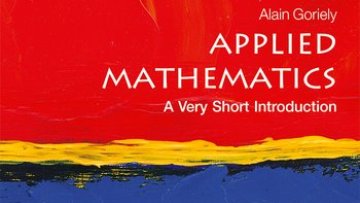'Euler's Pioneering Equation' has been compared to a Shakespearean Sonnet.
15:45
Detecting decompositions of hyperbolic groups
Abstract
When studying a group, it is natural and often useful to try to cut it up
onto simpler pieces. Sometimes this can be done in an entirely canonical
way analogous to the JSJ decomposition of a 3-manifold, in which the
collection of tori along which the manifold is cut is unique up to isotopy.
It is a theorem of Brian Bowditch that if the group acts nicely on a metric
space with a negative curvature property then a canonical decomposition can
be read directly from the large-scale geometry of that space. In this talk
we shall explore an algorithmic consequence of this relationship between
the large-scale geometry of the group and is algebraic decomposition.
Entering the cranial vault: imaging the fetal brain with ultrasound
Abstract
Ultrasound (US) imaging is one of the first steps in a continuum of pregnancy care. During the fetal period, the brain undergoes dramatic structural changes, many of which are informative of healthy maturation. The resolution of modern US machines enables us to observe and measure brain structures, as well as detect cerebral abnormalities in fetuses from as early as 18 weeks. Recent breakthroughs in machine learning techniques for image analysis introduce opportunities to develop bespoke methods to track spatial and temporal patterns of fetal brain development. My work focuses on the design of appropriate data-driven techniques to extract developmental information from standard clinical US images of the brain.
Does mathematics have anything to do with biology?
Abstract
In this talk, I will review a number of interdisciplinary collaborations in which I have been involved over the years that have coupled mathematical
modelling with experimental studies to try to advance our understanding of processes in biology and medicine. Examples will include somatic evolution in
tumours, collective cell movement in epithelial sheets, cell invasion in neural crest, and pattern formation in slime mold. These are examples where
verbal reasoning models are misleading and insufficient, while mathematical models can enhance our intuition.
Please note that this will be held at Tsuzuki Lecture Theatre, St Annes College, Oxford.
Please note that you will need to register for this event via https://www.eventbrite.co.uk/e/qbiox-colloquium-trinity-term-2018-ticke…
KATP channels and neonatal diabetes: from molecule to new therapy and beyond
Abstract
ATP-sensitive potassium (KATP) channels are critical for coupling changes in blood glucose to insulin secretion. Gain-of-function mutations in KATP channels cause a rare inherited form of diabetes that manifest soon after birth (neonatal diabetes). This talk shows how understanding KATP channel function has enabled many neonatal diabetes patients to switch from insulin injections to sulphonylurea drugs that block KATP channel activity, with considerable improvement in their clinical condition and quality of life. Using a mouse model of neonatal diabetes, we also found that as little as 2 weeks of diabetes led to dramatic changes in gene expression, protein levels and metabolite concentrations. This reduced glucose-stimulated ATP production and insulin release. It also caused substantial glycogen storage and β-cell apoptosis. This may help explain why older neonatal diabetes patients with find it more difficult to transfer to drug therapy, and why the drug dose decreases with time in many patients. It also suggests that altered metabolism may underlie both the progressive impairment of insulin secretion and reduced β-cell mass in type 2 diabetes.
Delay differential equations with threshold-type delays
Abstract
I will discuss some properties of delay differential equations in which the delay is not prescribed a-priori but is determined from a threshold condition. Sometimes the delay depends on the solution of the differential equation and its history. A scenario giving rise to a threshold type delay is that larval insects sometimes experience halting or slowing down of development, known as diapause, perhaps as a consequence of intra-specific competition among larvae at higher densities. Threshold delays can result in population dynamical models having some unusual properties, for example, if the model has an Allee effect then diapause may cause extinction in some parameter regimes even where the initial population is high.
Please note that this talk is only suitable for Mathematicians.
From medical scans to 3D printed body parts - the challenges of segmentation
Intracellular coordination of microswimming by flagella
Abstract
Since the invention of the microscope, scientists have known that pond-dwelling algae can actually swim – powering their way through the fluid using tiny limbs called cilia and flagella. Only recently has it become clear that the very same structure drives important physiological and developmental processes within the human body. Motivated by this connection, we explore flagella-mediated swimming gaits and stereotyped behaviours in diverse species of algae, revealing the extent to which control of motility is driven intracellularly. These insights suggest that the capacity for fast transduction of signal to peripheral appendages may have evolved far earlier than previously thought.
Computing reliably with molecular walkers
Abstract
DNA computing is emerging as a versatile technology that promises a vast range of applications, including biosensing, drug delivery and synthetic biology. DNA logic circuits can be achieved in solution using strand displacement reactions, or by decision-making molecular robots-so called 'walkers'-that traverse tracks placed on DNA 'origami' tiles.
Similarly to conventional silicon technologies, ensuring fault-free DNA circuit designs is challenging, with the difficulty compounded by the inherent unreliability of the DNA technology and lack of scientific understanding. This lecture will give an overview of computational models that capture DNA walker computation and demonstrate the role of quantitative verification and synthesis in ensuring the reliability of such systems. Future research challenges will also be discussed.
Revisiting Jeffery orbits; the importance of shape for micro-organism transport
Abstract
Classical work of Jeffery from 1922 established how at low Reynolds number, ellipsoids in steady shear flow undergo periodic motion with non-uniform rotation rate, termed 'Jeffery orbits'. I will present two problems where Jeffery orbits play a critical role in understanding the transport and aggregation of rod-shaped organisms. I will discuss the trapping of motile chemotactic bacteria in high shear, and the sedimentation rate of negatively buoyant plankton.



